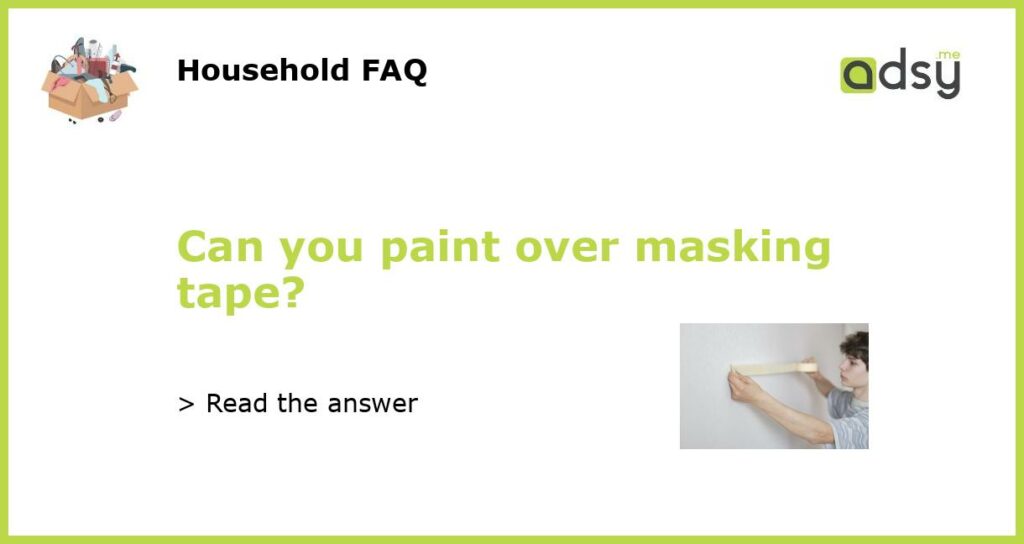Yes, you can paint over masking tape
Masking tape is commonly used to protect surfaces from paint during painting projects. However, many people are unsure if they can paint over masking tape or if they should remove it before painting. The good news is that you can paint over masking tape, but it’s important to follow a few tips to ensure a successful outcome.
Use high-quality masking tape
The first step to painting over masking tape is to use high-quality tape such as 3M ScotchBlue painter’s tape. This will create a strong seal between the tape and the surface, preventing paint from bleeding underneath the tape or peeling off the surface when the tape is removed.
Ensure proper tape application
When applying masking tape, make sure the surface is clean and dry. Press the tape down firmly along the edges to create a tight seal. Avoid stretching the tape, as this can cause it to lift and allow paint to seep underneath. Plan your taping strategy, and use multiple strips of tape to cover large surfaces or curves.
Remove the tape at the right time
Once you’ve finished painting, it’s important to remove the masking tape at the right time. If you remove it too early, the paint may still be wet and can smear or bleed. If you wait too long to remove the tape, it can become difficult to remove, and may even peel away the paint. The best time to remove the tape is when the paint is dry to the touch but not completely cured.
Touch up if needed
If the masking tape does lift any paint, you can touch up those areas with a small brush or roller. Use a light touch and be careful not to apply too much paint or use too much pressure, as this can create a noticeable bump. Once the touch-up paint is dry, it should blend in with the surrounding paint.






